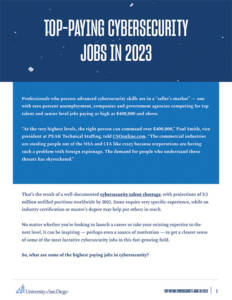Cyber security is one of the greatest threats facing our nation and it may come as little surprise, that as more and more personal data is stored online, identity theft has become the fastest growing crime in the United States. In order to combat the cyber security attacks and cyber criminals attempting to infiltrate software and systems to steal sensitive and proprietary information, engineers and cyber security experts are beginning to look towards nature for inspiration. This new approach is called biomimicry and is being relied on to create everything from wind turbines that are more efficient and productive (using whale fins as inspiration) to catheters and wound dressings that rely on pattern alone to inhibit bacterial growth (using shark skin as inspiration).
What is Biomimicry?
The Biomimicry Institute defines biomimicry as an approach to innovation that seeks sustainable solutions to human challenges by emulating nature’s time-tested patterns and strategies. The idea is that there are millions of species and organisms that have inhabited this planet far longer than humans have and they have learned to adapt, uniquely and gracefully, to life on earth. As science author Janine Benyus puts it, “they are our elders” and we can learn from them to create more efficient and sustainable systems. “After 3.8 billion years of research and development, failures are fossils, and what surrounds us is the secret to survival.”
Here’s a basic example from the Biomicry Institute.

Benyus perfectly explained the idea of biomimicry in her book entitled, Biomimicry: Innovation Inspired by Nature.
“Our most clever architectural struts and beams are already featured in lily pads and bamboo stems. Our central heating and air-conditioning are bested by the termite tower’s steady 86 degrees F. Our most stealthy radar is hard of hearing compared to the bat’s multifrequency transmission. And our new ‘smart materials’ can’t hold a candle to the dolphin’s skin or the butterfly’s proboscis. Even the wheel, which we always took to be a uniquely human creation, has been found in the tiny rotary motor that propels the flagellum of the world’s most ancient bacteria.”
Although the cyber security industry has just started to look at biomimicry to inform their strategy in combating cyber crime, other industries have already started testing and implementing technology built using biomimicry techniques. SLIPS Technologies, for example, is testing surface treatments and films on a skyscraper in New York City to see if they can prevent ice and snow accumulation. The surface treatments and films were inspired by the darkling beetle that lives in areas like the Nambian desert and harvests moisture from fog.
In fact, biomimicry has actually been used for centuries, although the official name wasn’t coined till 1982 by Janine Benyus. The Wright brothers for example employed biomimicry by observing pigeons in flight and using them as inspiration in the creation of the first airplane.
How is Biomimicry Being Used in Cyber Security?
For the cyber security industry, biomimicry could offer up a number of solutions. JR Reagan, global chief information security officer at Deloitte eloquently summed it up when he said, “It seems paradoxical, this borrowing from the natural world to safeguard a virtual one. But humans have engaged in biomimicry for eons, starting, perhaps, with wearing animal hides for warmth. Now, as then, we may find some of the best solutions to our problems in our own backyards—on nature’s path.”
The Harvard Business Review (HBR) recently wrote about learning from the lizard, who easily sheds its tail when attacked in order to protect its more vital organs. Translating to security, HBR noted that, “There may be sacrificial systems or information you can offer up as a decoy for a cyber-predator, in which case an attack becomes an advantage, allowing your organization to see the nature of the attacker and giving you time to add further security in the critical part of your information infrastructure.”
Similarly, digital ants are being tested as a way to help identify cyber threats before they occur. Digital ants crawl through computer systems searching for threats and once one is located, the rest of the ant army is called in to take down the threat and send an alert to the system operator.
Another example is the use of disruptive camouflage. Zebra stripes and patterns allow them to make use of disruptive camouflage when fleeing a predator because “patterns of contrasting stripes purportedly degrade an observer’s ability to judge the speed and direction of moving prey” according to the book Towards a Systematic View on Cybersecurity Ecology. This same disruptive camouflage strategy is used in cybersecurity to “distribute the uncertainty between the attacker and the defender more fairly” in moving target techniques.
As cyber security engineers and professionals begin to look more closely at nature there will increasing opportunity to derive successful cyber security strategies from our ecosystem that has existed for 3.8 billion years.
If you want to help shape the future of cyber security and delve into biomimicry and other strategies for combating cyber threats, consider a degree from the University of San Diego. We offer two cutting edge master degree programs: the Master of Science in Cyber Security Engineering and the online Master of Science in Cyber Security Operations and Leadership.




